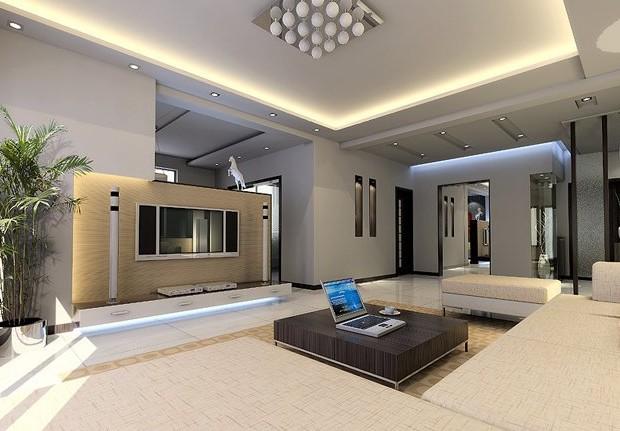When it comes to modern home décor, UV boards and integrated wallboards are rapidly gaining popularity for their aesthetic appeal and practical benefits. However, many homeowners and even some professionals struggle to distinguish between these two materials. If you're planning a renovation or interior upgrade, understanding the differences between these boards is essential. This comprehensive guide will walk you through the characteristics, surface treatments, installation methods, and health concerns associated with UV boards and integrated wallboards.

Understanding UV Board and Integrated Wallboard
What is a UV Board?
A UV board, or ultraviolet board, is a type of decorative panel primarily made from calcium powder and PVC (polyvinyl chloride). It gets its name from the UV-cured paint applied to its surface during manufacturing. The result is a glossy, stone-like appearance that is sleek and modern. This material is known for its high hardness, scratch resistance, and reflective surface.
What is an Integrated Wallboard?
Integrated wallboards, especially bamboo fiber integrated panels, are made from a composite of bamboo or wood powder, calcium powder, and PVC. These wallboards are typically more environmentally friendly and have a natural wood-like texture. They’re designed to offer better insulation and aesthetic warmth compared to the more synthetic look of UV boards.
Material Composition: What's Inside Each Panel?
UV Board Material Breakdown
UV boards are composed mainly of calcium carbonate and PVC, giving them a dense, stone-like finish. This synthetic composition makes them moisture-resistant and highly durable. However, because the surface undergoes UV paint coating, the use of chemical agents during manufacturing is something to be aware of.
Integrated Wallboard Material Composition
Integrated wallboards use a mixture of natural bamboo fiber or wood powder, PVC, and calcium powder. The organic materials contribute to better air quality and insulation in homes. Their more eco-friendly profile has made them a popular choice in green building and sustainable design.
Surface Finishing Process: Gloss vs. Texture
UV Board Finishing
After forming the base material, UV boards go through thermal transfer printing followed by a UV paint application, which is then cured using ultraviolet light. This process enhances shine, color depth, and surface durability. The finish is smooth and reflective, ideal for modern or minimalist interiors.
Integrated Wallboard Surface
The surface of bamboo fiber wallboards is typically covered with a PVC film printed with patterns, offering a variety of textures and woodgrain effects. Though less shiny than UV boards, these panels provide a warmer, more natural look and are more adaptable to various interior styles, especially rustic and traditional designs.
Size and Specification Differences
Standard UV Board Dimensions
UV boards commonly come in 1.22m x 2.44m sheets with a thickness of approximately 3mm. These are often cut into 60cm x 60cm tiles for aesthetic and functional ease during installation.
Integrated Wallboard Sizes
Integrated wallboards are more versatile in sizing. Their widths range from 30cm to 60cm, and lengths can be customized based on project needs. These boards are usually 9mm thick, offering better insulation and soundproofing compared to thinner UV panels.
Installation Process: Which is More Convenient?
Installing UV Boards
UV boards require precision cutting. They're typically affixed to walls using adhesives or fasteners, making them suitable for flat, stable surfaces. Installation can be more complex and time-consuming, but the result is a seamless, elegant appearance.
Installing Integrated Wallboards
Integrated wallboards offer a more user-friendly installation. If the wall is smooth, panels can be directly fixed using clips or fasteners. For uneven surfaces, wooden keels or foam adhesives are used to ensure alignment. Their lightweight structure simplifies the process, reducing labor time and cost.
Are UV Boards Harmful? Health and Safety Concerns
This is a common concern among homeowners, especially when selecting materials for bedrooms or children's rooms.
Potential Health Risks of UV Boards
While standard UV boards are generally safe, lower-quality versions manufactured by unscrupulous companies may contain harmful substances such as heavy metals or excessive formaldehyde. The UV paint, if not environmentally certified, could emit volatile organic compounds (VOCs), impacting indoor air quality.
Moreover, if UV boards are made from solid wood bases, the glue and paint used during manufacturing may release trace amounts of formaldehyde, especially in poorly ventilated areas.
How to Ensure Safety
To ensure you're purchasing a non-toxic, high-quality UV board, look for:
Certified low-VOC or formaldehyde-free labels
Reputable brands with transparent manufacturing practices
Third-party environmental test results
Proper ventilation during and after installation also helps mitigate any short-term emissions.
Integrated Wallboards: A Safer Choice?
In comparison, integrated wallboards made from natural bamboo fiber and PVC typically have lower emissions. However, they are not entirely free from chemical binders, so checking environmental certifications remains essential.
Conclusion: Which One Should You Choose?
Both UV boards and integrated wallboards bring distinct advantages to modern interior design. Your choice should depend on your aesthetic goals, installation needs, and sensitivity to environmental health.
Choose UV boards if you’re aiming for a sleek, high-gloss, and contemporary look, especially in kitchens, bathrooms, or accent walls.
Opt for integrated wallboards if you prefer a natural texture, enhanced insulation, and eco-friendly materials, ideal for living rooms, bedrooms, and hallways.
No matter your decision, always verify the quality and environmental safety standards of the product. Investing in certified materials will not only protect your health but also ensure lasting beauty and performance in your home.
English
العربية
Français
Русский
Español
Português
Deutsch
italiano
日本語
한국어
Nederlands
Tiếng Việt
ไทย
Polski
Türkçe
አማርኛ
Bahasa Melayu
தமிழ்
Filipino
Bahasa Indonesia
magyar
Română
Монгол
қазақ
Српски
हिन्दी
فارسی
Kiswahili
Slovenčina
Slovenščina
Svenska
українська
Ελληνικά
Suomi
Հայերեն
עברית
اردو
Shqip
বাংলা
Hrvatski
Afrikaans
Māori
සිංහල
Oʻzbekcha
latviešu
Беларуская мова
Bosanski
Български
ქართული
Lietuvių
Malti










